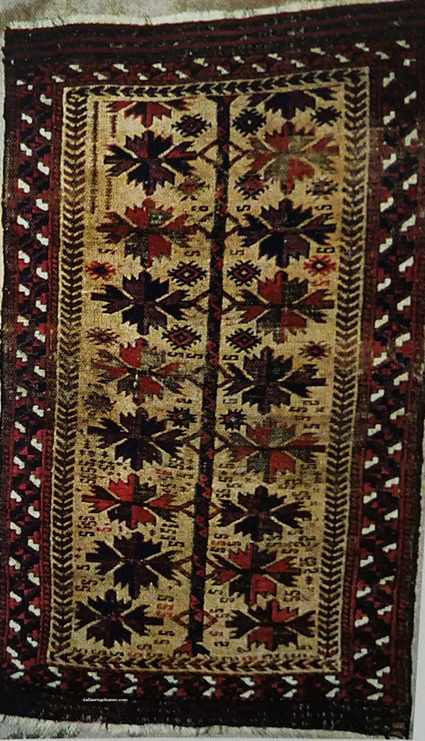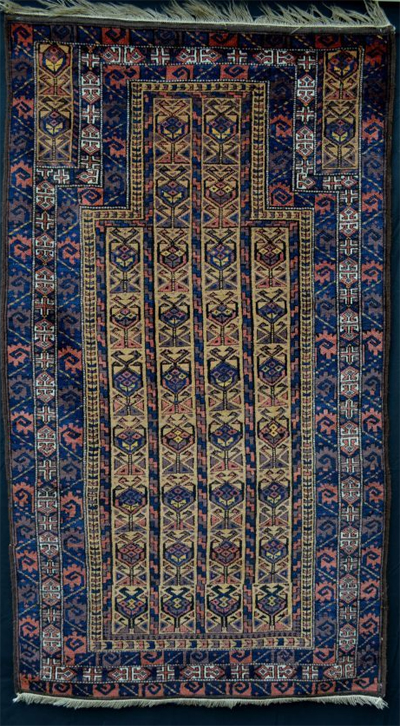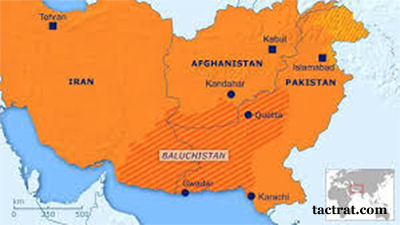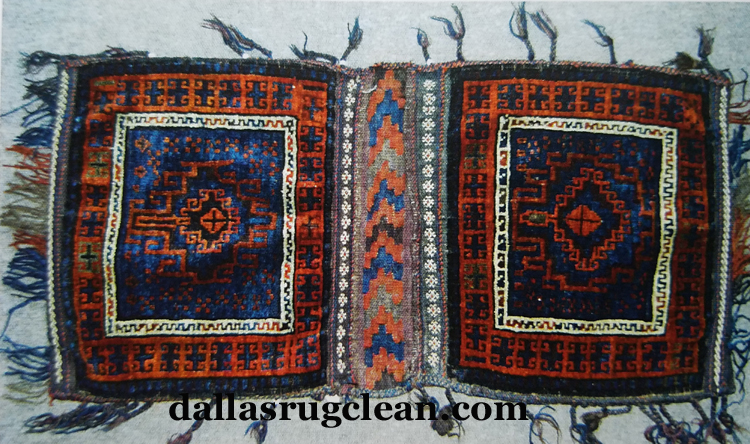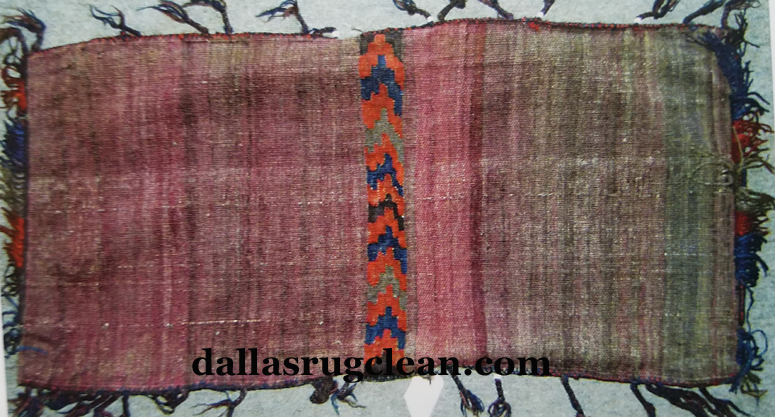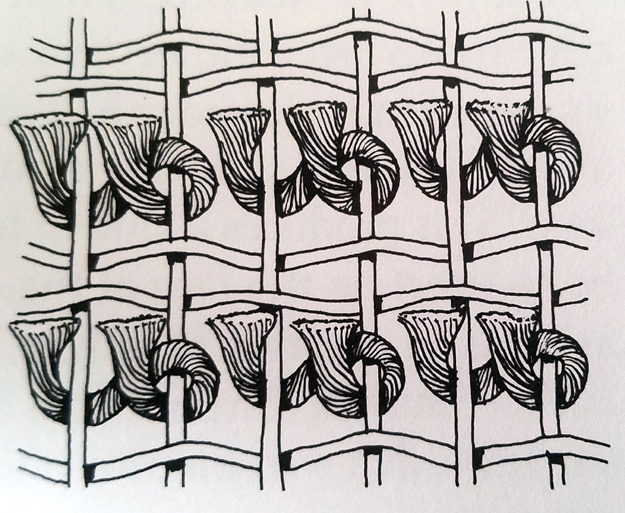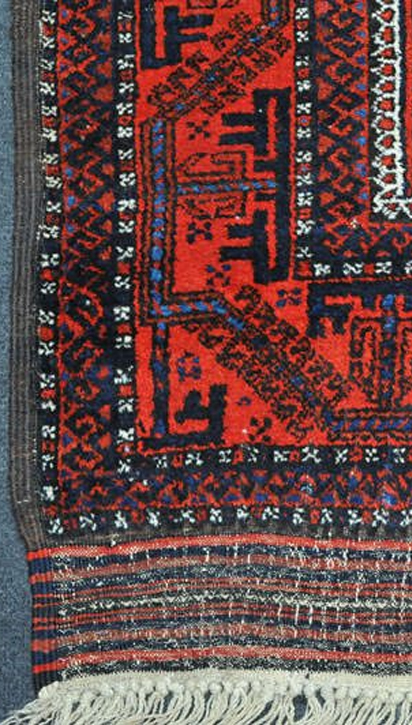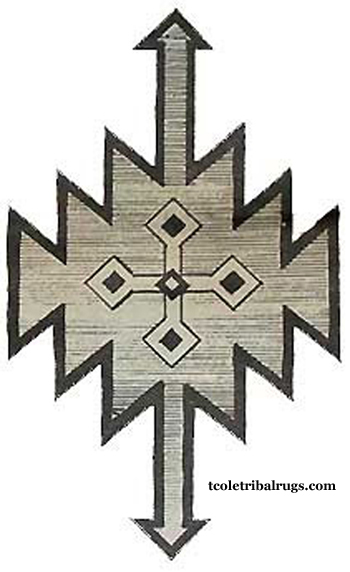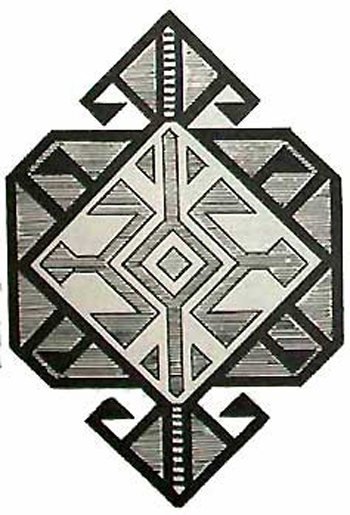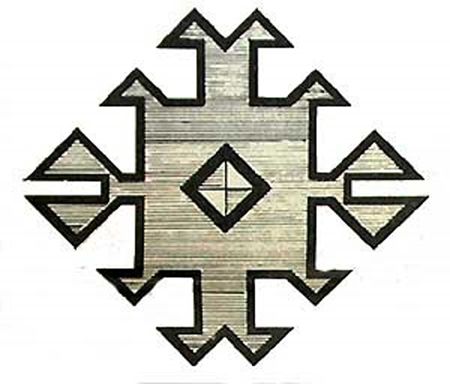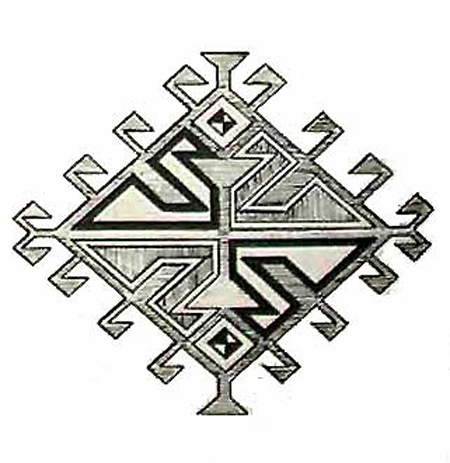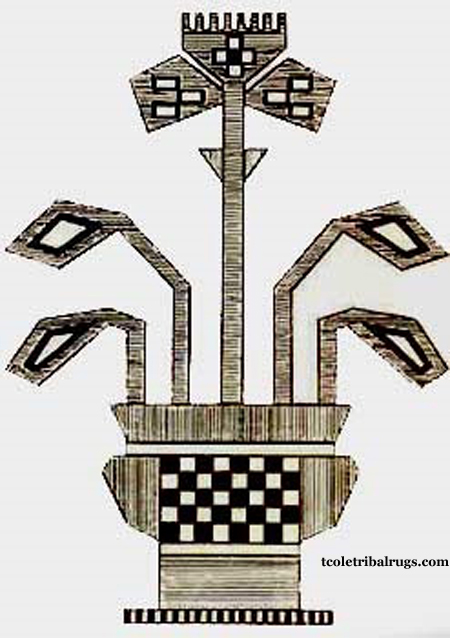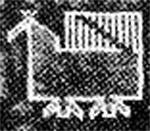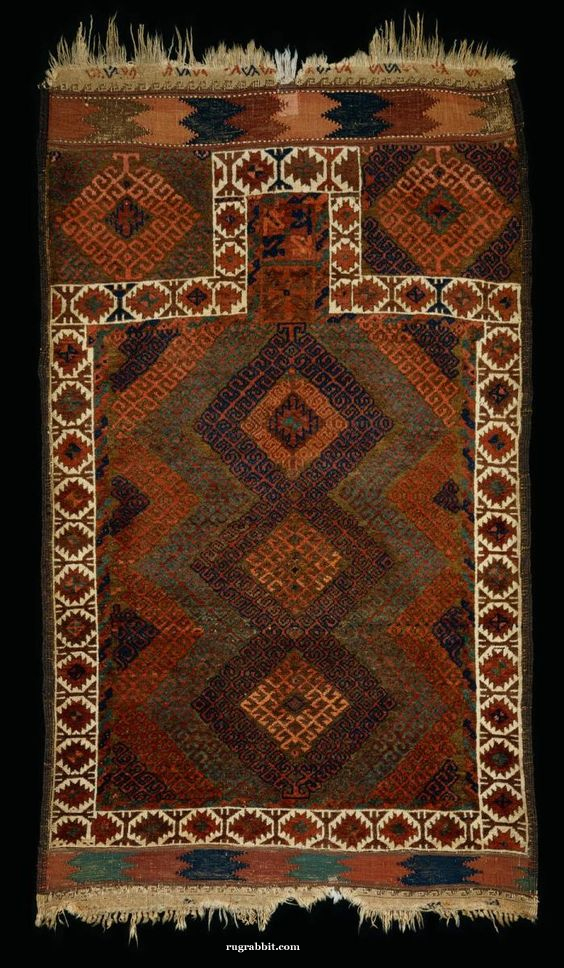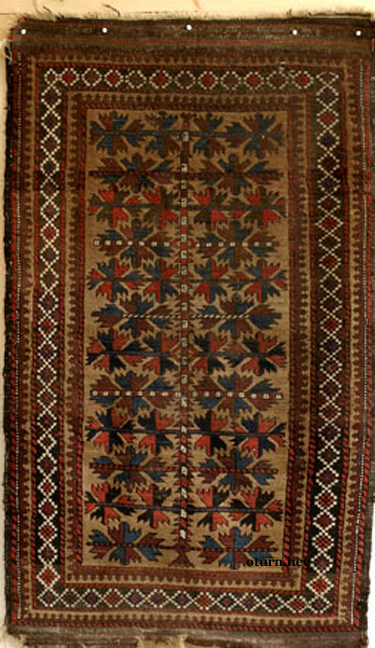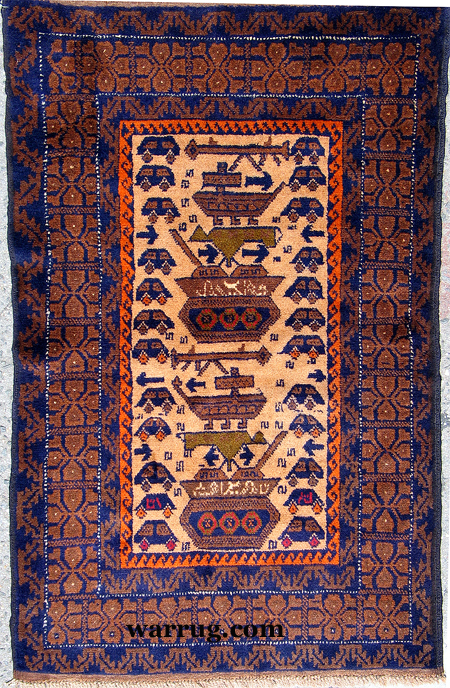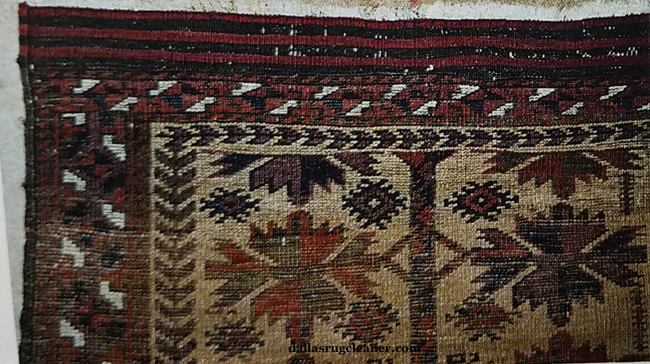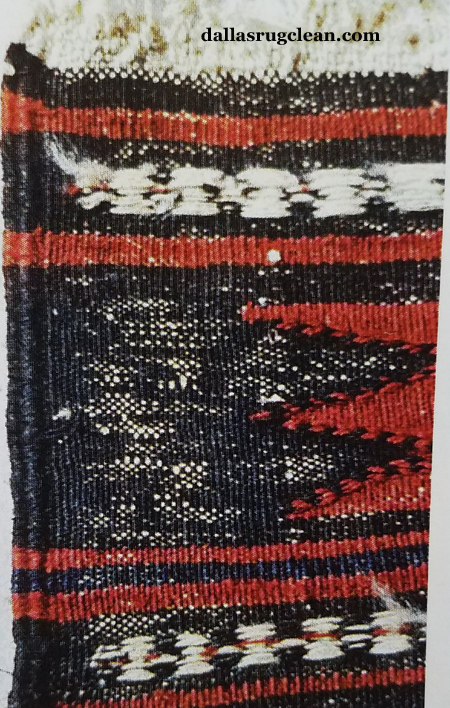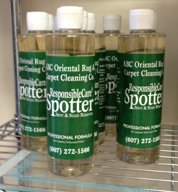BALUCHI ORIENTAL RUGS
ANTIQUE BALUCHI ORIENTAL RUGS
LOCATION
Antique Baluchi oriental rugs exhibit a wide range of styles and were more a blend of Turkish, Persian, and Caucasian rug styles than a distinct Baluchi style.
The region called Baluchistan, where antique Baluchi rugs were produced by tribes in eastern Persia and western Afghanistan, no longer exists as an independent region. In place of that area there now exists a region on either side of the border between south-eastern Iran, western Pakistan, and southern Afghanistan. This was where the main area for weaving took place, giving rise to the antique rugs of Baluchistan.
FEATURES
The antique Baluchi rugs were typically coarsely woven and many featured the tree of life motif. The quality of the wool and the color combinations made them fairly easy to identify. The colors were typically dark tones of red, brown, blue, purple, and ivory. All the rugs used black outlines and black shading to make the original shades of the colors look even darker.
MOTIFS USED
Many motifs were actually created by the Baluchi tribes or were transformations from other patterns. Some of these include the tree of life, geometric allover repeat designs, diamond latch hook medallion patterns, and others.
The rugs featured the repetition of a singular allover pattern consisting of different geometrical motifs and this is one of their unique characteristics. Some of these motifs include the tree of life, allover repeat designs, diamond latch hook, medallion patterns, and others.
EARLY DISLIKE OF BALUCHI RUGS
The antique tribal Baluchi rugs were considered by many to
be too dark with little use of ivory or white and a restricted range of colors.
They were also considered to be fragile because of the looseness of their weave
and the softness of their wool. (Although,
nomadic people typically had to have rugs in their homes that were
light (and soft as well) so they could be easily moved.)
It was often pointed out they were very similar to the rugs of their neighboring Turkoman tribes and in the city and village rugs of nearby Iran. As a result, they were never as valuable as rugs produced in close by regions in Persia, Turkey or the Caucasus. This relative disrespect for the antique Baluchi rugs eventually led to most of them being lost or destroyed and even overused and abused.
COLLECTORS OF ANTIQUE BALUCHI RUGS TODAY
The collectors of today show much more appreciation for the antique rugs than in the past. Actually, those who collect and appreciate Baluchi oriental rugs today realize even though they may be derived from Turkoman, Persian, and other cultural designs, they have a distinctive quality of their own.
BALUCHI ORIENTAL RUGS TODAY
The term Baluchi (Baluch, Balouch) refers to people whose primary language is Baluch. Many different groups of people are sometimes referred to as Baluchi. They include the Barbari, Timuri, Taimani, Makrani, Sarawani, and others. Most Baluchi tribal people today live in Pakistan and are divided into 2 groups: Sulaimani and Makrani. A small number live the Punjab province of India.
Weavers in the southern part of the Baluch region typically weave flatweaves or kilims (rugs without a pile). Their kilims usually use undyed wool, making them rather somber looking. The people of the southern Baluch area are also known for their embroidery. They decorate their bags with tassels and with shells found in the deserts of south Afghanistan left over from ancient oceans.
Weavers in the western Baluch area produce the majority of Baluchi rugs and bags. Approximately 2/3 live in Iran and most of the rest in Afghanistan with a few tribes in Turkestan.
Baluchi rugs sold in the Iranian collection city of Meshad can be called Meshad-Baluch rugs. Those sold in the Afghanistan collection city of Herat are known as Herat-Baluch rugs. As a general rule, Baluchi rugs are labeled according to the region in which they are sold.
Because of the nomadic nature of the Baluchi people, Baluchi rugs can be anywhere from Iran, Afghanistan, and surrounding areas. Each region has given different aspects to its rugs such as color and pattern variations. However, unless you ask the Baluchi people themselves, it is difficult to identify the particular area where a rug was actually woven.
CONSTRUCTION OF BALUCHI ORIENTAL RUGS
FOUNDATION
The warps (up and down cords) are made of wool and the wefts (side to side cords) can have a
mixture of wool and goat hair (and sometimes camel hair). Newer rugs have
a warp made of cotton and the wefts are a brownish color and sometimes cotton
as well. The
rugs are double-wefted with 2 sinuous brown or dark brown shoots. Some of the older ones, pre-WWII, can be found with just one weft.
The pile is usually wool but can also have silk added.
Unfortunately, the post WWII Baluchi rugs use poor synthetic dyes which can bleed and fade. Puckers, buckles, and curling can be found in post WWII rugs as well.
KNOT
The knot is the asymmetrical (also known as the Persian or Senna) knot and it opens to the left. The knots are usually tightly packed down. A typical Baluchi rug has 40-60 knots per square inch although finer weaves can be found.
SIDE FINISHES
The way in which the sides or selvedges of the Baluchi rugs are finished are a distinguishing characteristic of these rugs. These edges can be up to ¾ of an inch wide and composed of dark brown or black goat hair. The selvedges are usually double, triple, or quadruple corded.
END FINISHES
Baluchi oriental rugs often have large sections on both ends that are flat woven. This gives these rugs a very distinct look. The ends are often decorated with strips and bands of brocading as well.
COLORS
The colors are typically somber ones such as dark brown mahogany, dark blue, camel color, ivory, and dark purple. Newer rugs use the color red.
SIZES
Baluchi oriental rugs are woven on rudimentary horizontal looms (a necessity for nomadic peoples), thus the rugs tend to be small. Most are no larger than 4x6. A large number of square rugs are also produced.
USES
The Baluchi people, as with many nomadic people, produce a number of items for a number of different uses. They can be pile or flat-woven and even a combination of the two types. These include double saddlebags, cushion covers, saddle covers, horse blankets, ground covers where meals are served, blinders for donkeys, horses, and camels, etc.
QUALITY
The quality of Baluchi rugs can vary greatly. Often, the better quality rugs are from the Khorasan province of Iran.
COMMON MOTIFS IN BALUCHI ORIENTAL RUGS
The motifs and patterns in Baluchi rugs are geometrical and contain rectangles, hexagons, and octagons. Although plant motifs can be found in the Baluchi rugs, they are rectilinear or geometric rather than curvilinear.
One of the unique characteristics of Baluchi rugs is the repetition of a singular pattern all over the rugs. Repeating or alternating pear-shaped medallions are very prominent.
All 4 sides of the rugs are typically surrounded by geometric borders. Another unique characteristic of Baluchi oriental rugs is a honeycomb pattern created by rows of medallions making the field color indistinguishable.
The Baluchi weavers took many of the designs of their Turkoman neighbors and modified them to their own taste. Motifs were taken from Islamic symbolism as well. The different style elements modified from other traditions and sometimes found in a single rug appealed to the European market.
Because of the large number of Baluchi tribes, there are motifs used by specific tribes and specific weavers, as well as some used by the majority of the tribes. Examples are the Tekke gul, frog gul, spoon gul, vase, camel foot, etc. The prayer rug is common as well.
AFGHAN WAR RUGS
Afghan Baluchi war rugs are a relatively new genre of rug. They are usually prayer-rug size and feature scenes from the everyday life of the Afghan People. Unfortunately, these include machine guns, helicopters, fighter planes, and more. Sadly, the quality of these rugs and the dyes used are poor.
SUMMARY
BALUCHI ORIENTAL RUGS
Today, many nomadic tribes have been able to become more sedentary or semi-sedentary. Roads have been opened up to formerly inaccessible areas. Tribes that had been totally self-sufficient now have access to foreign markets. Even their political, social, and economic structure has changed.
The Baluchi people have thus far survived centuries of repeated efforts of foreign ethnic elements to absorb them, and constant pressure from hostile neighbors, and have somehow managed to maintain their tradition and culture as represented in their weavings.
"The Cleanest Clean You've Ever Seen."
by
ABC Oriental Rug & Carpet Cleaning Co.
130 Cecil Malone Drive Ithaca, NY 14850
607-272-1566
ABC
Carpet & Rug
Spotting Guide
Learn how to remove spots with ordinary household solutions
Sign up below to gain access to your complementary Spotting Guide from ABC.
Registering your email address guarantees you will be notified whenever discount savings coupons become available.
Did you know that our ABC Responsible Care Spotter can get those pesky spots out of your carpet and rugs and will work equally as well on your clothes and upholstery?
Stop by our office and pick one up. They are $5.00 + Tax but if you have carpets or upholstery cleaned in your home or business, just request a free one from your Technician.
And don't forget to fill out the form above to download your free ABC Spotting Guide!
We are proud sponsors of the SPCA of Tompkins County!
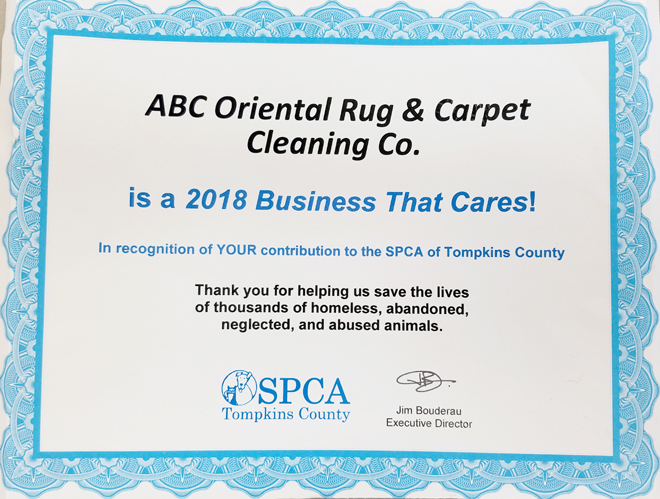
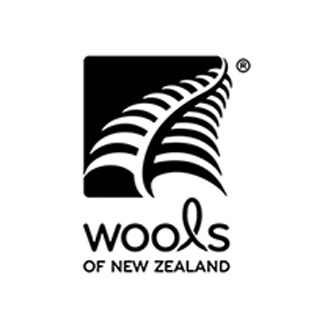
The Standard of Excellence
Oriental and Area Rug Washing at ABC Oriental Rug
Rugs on the wash floor are gently scrubbed before thorough rinsing.
Gentle scrubbing continues. Note the wringer in the background-the next step in the washing process after rinsing.
After thorough rinsing, the rug is sent slowly and carefully through the wringer to take out as much of the water as possible before being hung on racks in the drying room.
Rugs are hung on a rack in the temperature controlled drying room until completely dry.
